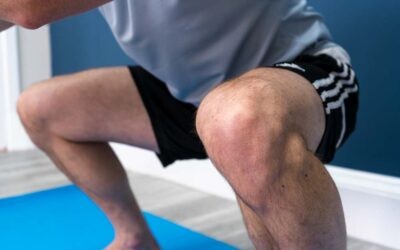What is plantar fasciitis or rather plantar fasciopathy?
The plantar fascia is a thick connective tissue in the sole of the foot. It works with the Achilles tendon in a windlass mechanism (I know the sailors reading this will relate!) to store and release energy during walking and running.

The term ‘plantar fasciitis’ suggests an inflammation (-itis), however thickening and degenerative tissue findings are more common. The term plantar fasciopathy is therefore more accurate but not as widely used. Research has found the process of PF to be similar to a ‘tendinopathy’ with collagen breakdown, calcification and changes to the vascular and nervous tissues. These changes occur as the tissues try to repair themselves and is part of the disease process.
This all sounds very complicated but essentially all this means is more pain and less capacity to absorb load and perform daily tasks such as walking.
Who does it affect?
Plantar Heel pain most commonly affects people aged 45-65. Age related changes within the fascia can include reduced elasticity and shock-absorption. Being overweight or obese increases the risk of developing chronic plantar fasciopathy.
It is common in runners, particularly older athletes. Overtraining or doing ‘too much too soon’, too much hill or speed work increase the risk in runners.
People who stand or walk for long periods at work can be affected and it is more prevalent in military populations.
Wearing unsupportive shoes, wearing slip on shoes like flip flops and backless shoes can be a factor.
Biomechanical factors can significantly contribute to PF, most commonly gastrocnemius (calf muscle) tightness. Poor foot strength and hallux valgus (stiffness in the big toe joint) are also linked to PF.
Diagnosing Plantar Fasciitis / Fasciopathy
Patients often tell us they have plantar fasciitis before we tell them. Because it is common, chances are you know someone who has suffered!
Diagnosis is made by the location of the pain and the behaviour of symptoms. Pain is usually a sharp, stabbing pain in the middle of the heel on the sole of the foot or in the arch. It is typically worse in the morning or after a period of rest (some patients describe it ‘like walking on broken glass’). It improves with walking but worsens towards the end of the day or with sports.
Imaging is not commonly used to diagnose heel pain. It can be used to exclude other causes of heel pain. X-rays might show heel spurs, but there is little correlation between heel spurs and pain, which is good news if you’ve ever been told you have a heel spur because your symptoms can still improve despite this finding. MRI and ultrasound scans do not diagnose PF but can rule out other causes of heel pain in more persistent cases.
How do I manage it?
A review of surgical and non-surgical treatments found that the most useful non-surgical treatment for PF is the reassurance and explanation that pain will most likely settle over time and help with managing expectations. At Optimal Physio we take time to know what your activity levels are, what your goals are, and how you are feeling about your condition.
Managing load is key. We can help you to identify contributing factors and discuss what you can do. We don’t like telling people to completely stop exercising – it’s about finding a balance and some alternatives to the pain provoking activities. Finding this balance allows the repair process to be most successful.
Your rehabilitation plan will include exercise to improve ankle and foot mobility, foot strength and calf and achilles tendon strength. Exercise is linked with better outcomes in the short and long term. A full gait analysis and custom made orthotics may also be recommended as part of your treatment in order to assist recovery and prevent reoccurrence.
Watch this video to find out more:
Some people find relief with strapping and this can help you to remain active. Applying ice at the end of the day or after activity can feel good.
For more persistent cases there are other treatments available but there is a lack of research into their long-term effectiveness. These include shockwave therapy, injection and surgery. We are not supporters of surgery or injection for this condition.
So if any of this sounds familiar, contact us to arrange an online video consultation and start your recovery journey without the fear or making things worse.
You will get advice and exercise tailored to your needs and get you back to doing what you love and enjoying being on your feet again!
Credit: Pamela Couper, Head Physiotherapist Optimal Physio Largs.


0 Comments